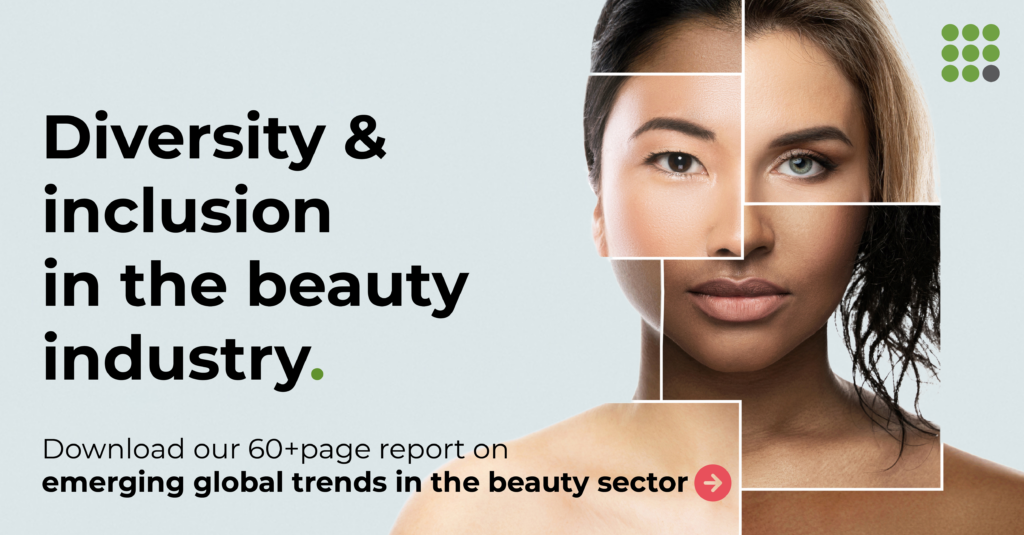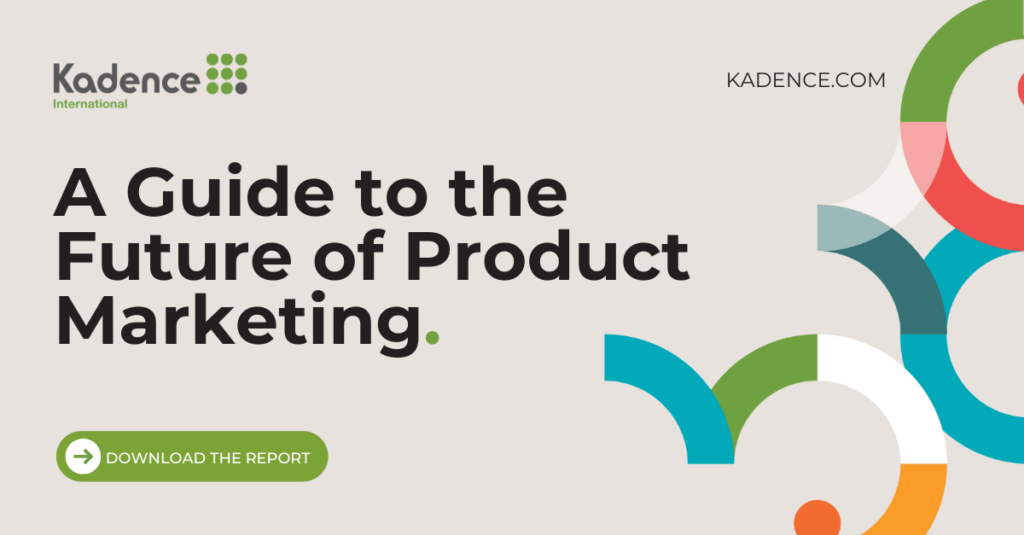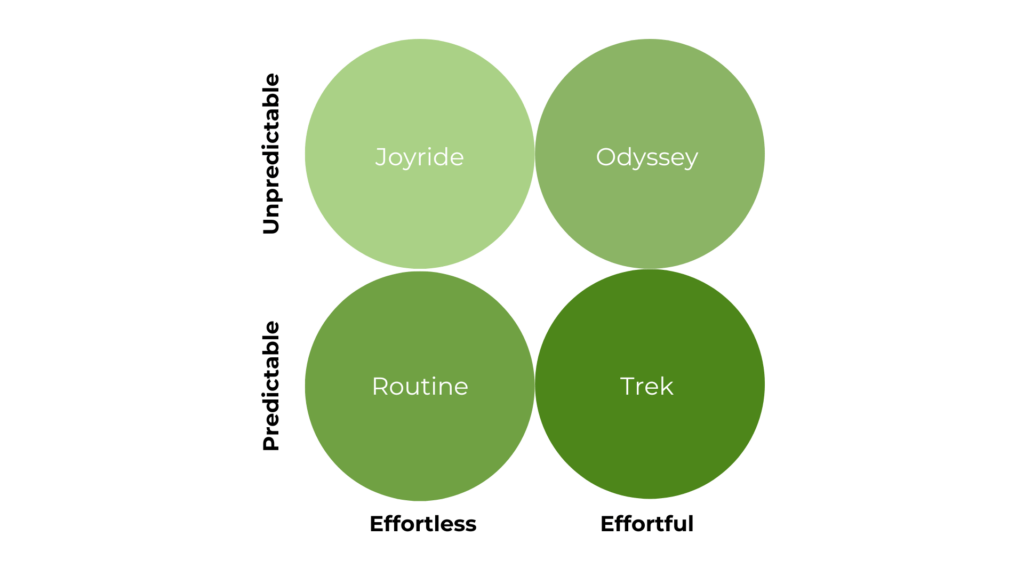In the early 21st century, the automotive world witnessed a game-changing figure: a staggering 10 million electric vehicles (EVs) traversed roads worldwide by the end of 2020, as the International Energy Agency reported.
While this number might have been unthinkable a mere decade ago, it has quickly become a testament to humanity’s increasing pivot towards sustainable transportation. Much more than a nod to a greener planet, the global rise in electric vehicle adoption reveals intricate tales of shifting consumer behaviours, groundbreaking innovations, and strategic brand narratives playing out differently across the world’s major markets.
At each turn, there are unique tapestries of market-specific trends, consumer inclinations, and brand strategies. These insights serve as a compass for brand managers and decision-makers, directing products to align with the pulse of evolving global demands.
The sector’s journey is anchored in a central conviction: innovation, intertwined with consumer preferences, is also the engine propelling the electric vehicle market into tomorrow.
Electrifying Shifts: The Global EV Path
Vrooming Ahead: Global Market Growth
The sales charts of EVs present a narrative of a world moving inexorably toward a greener horizon. By 2022, electric vehicle sales crossed the 15 million mark, representing nearly 10% of the global vehicle market. This isn’t just a fluke or a temporary surge.
As per the World Economic Forum, with declining battery costs and the ascendancy of environmental consciousness, EV sales are projected to represent over 30% of global vehicle sales by 2030. For those tracking the trajectory, these figures signal a revolution.
Eco-Innovators: Pioneers in the EV Sector
In the EV sector, names like Tesla, NIO, and BYD have become the flagbearers of an electrified era. Tesla’s ‘Roadster’ shattered myths surrounding electric cars’ performance limitations. At the same time, Chinese giants like NIO and BYD are not only dominating the Asian markets but have cast their electrified nets across the globe.
However, it isn’t just the newcomers that have heeded the electric call. Legacy automakers such as Volkswagen, General Motors, and Nissan are also actively shaping the future mobility narrative with massive investments and promising line-ups.
Our latest report on automotive trends, “Speed Bumps of the Road to Change,” explains the broad shape of the automotive future. Regulatory pressure to lower emissions, competitive pressure from tech companies, and consumer demands for entry-level cars with connected and driver assistance features are creating the conditions for a perfect storm of change.
Tech Sparks: Innovation and Its Role
If the world’s shift to electric vehicles were likened to a symphony, technology, and innovation would undeniably be the lead instruments, playing the most resonant chords. Battery technology sits at the forefront of this movement, with advancements in solid-state batteries promising greater range and faster charging times, breaking the psychological barriers that once deterred potential EV buyers.
But the canvas of innovation stretches far beyond batteries. Think of self-driving software, regenerative braking systems, or sophisticated vehicle-to-grid solutions. These aren’t mere features but transformative technologies pushing the envelope, ensuring that electric cars aren’t just an alternative but are superior in almost every dimension.
As we pierce deeper into the electric era, it’s abundantly clear that this goes beyond swapping fuel tanks for batteries. It’s a holistic reinvention of mobility, where technology and innovation are not just supporting actors but the very scriptwriters of this automotive epic.
Consumer Drive: Preferences and Behaviors
Turning the Key: Evolution of Consumer Behavior
Not long ago, an electric vehicle (EV) was perceived as a niche novelty, a curious divergence from conventional automotive norms. The initial EV consumers were primarily early adopters, often environmentally conscious and willing to pay a premium for their principles. But as the calendar pages flipped, so did the perception.
Today’s EV consumer is multifaceted. Some are drawn to the allure of silent yet powerful accelerations, others to the low operating costs, and many simply to the burgeoning realisation that a sustainable choice doesn’t require a compromise on luxury or performance.
A 2022 study from McKinsey & Company highlighted this transformation, noting that over 60% of new car buyers considered an EV a serious option for their next purchase. The transformation, it seems, is not in the vehicle but in the mindset.
Eco-Desires: Understanding Consumer Preferences
To think that ecological concerns solely drive the rise of EVs would be to skim the surface. While the environment is undeniably a force, consumer preferences weave a more intricate tapestry. Yes, range anxiety – the fear of batteries running out of charge – was a deterrent, but as battery technologies evolved, so did consumers’ confidence.
Many now seek vehicles with faster charging times rather than just extended ranges. Infotainment, autonomous driving features, and vehicle connectivity also rank high in preference metrics. And let’s not overlook aesthetics; sleek design is an expectation.
Further diving into consumer desires, the branding and identity of an EV play a pivotal role. An electric vehicle is often seen as an extension of a consumer’s personal brand, so automakers’ narratives matter. Consumers aren’t just buying a car; they’re buying into a story, an ethos.
Customer Connection: Importance of Consumer-Centric Approaches
Brands that have thrived in the electric era aren’t just the ones that engineered great vehicles; they’re the ones that listened. The EV market isn’t merely about replacing fuel-driven engines with batteries but understanding the pulse of a new breed of consumers.
A consumer-centric approach goes beyond crafting vehicles that cater to modern needs. It means establishing charging infrastructures in urban and remote areas, offering immersive vehicle experiences before purchase, and consistently engaging post-purchase through software updates and community events. It’s about creating an ecosystem where the consumer feels valued, heard, and integral to the brand’s journey.
The electric vehicle domain is as much about human connections as it is about connections to the grid. And brands that forge authentic bonds with their consumers don’t just find customers; they cultivate advocates.
Region-Specific Insights and Innovations
U.S. Market: The Land of Electric Opportunity
The United States, with its sprawling highways and iconic automobile culture, stands at a juncture of immense promise and palpable challenges in the transition to electric vehicles.
The American Electric Dream: Market Growth
The appetite for electric vehicles in the U.S. has been nothing short of ravenous. More than 320,000 electric cars were sold in the first quarter of 2023, 60% more than over the same period in 2022. With federal incentives, state-level policies, and an increasing number of automakers pledging a shift towards electric, projections anticipate that one in every four new cars sold by 2030 in the U.S. could be electric. Driven by the rising need for efficient & eco-friendly vehicles, EVs are anticipated to register a CAGR of over 15.5% between 2023 and 2032.
Consumer Pulse: Preferences and Purchasing Patterns
American consumers, historically swayed by the roaring engines of muscle cars, are now becoming attuned to the silent might of electric powertrains. According to a story published in the Washington Post, “Just over a third of Americans say EVs are better for driving places they go day-to-day than gas-powered vehicles, but majorities say they are better for reducing climate change (59 percent) and air pollution (70 percent).” However, they’re not willing to compromise on comfort and tech. Features like autonomous driving, advanced infotainment, and superior connectivity stand high on the American wishlist. Additionally, a shift towards sustainable luxury is evident, with premium EV brands garnering significant attention and sales.
Understanding your customers is the key to success in the competitive world of automotive marketing. To help you better understand your target audience, we have created “The 9 Personas of Car Buyers,” a comprehensive guide that unveils the diverse consumer segments within the auto industry.
Innovation Hub: Breakthroughs and Strategies
The U.S., renowned as a cradle of innovation, has been a nucleus for groundbreaking advancements in the EV sector. Solid-state battery tech, pioneered by companies like QuantumScape, promises to address range and charging concerns. Brands are also adopting unique approaches to consumer engagement. Augmented reality showrooms, over-the-air software updates, and even subscription-based vehicle models are emerging, reshaping traditional vehicle ownership and experience paradigms.
Case Study: Spotlight on a U.S. Brand – Tesla
No discourse on the U.S. EV terrain would be complete without mentioning Tesla. From being a fledgling startup to becoming the most valuable car company globally, Tesla’s story is a testament to visionary thinking and relentless innovation.
With the Model S, Tesla shattered performance myths. With the Model 3, they made electric luxury accessible. Their Supercharger network addressed range anxiety head-on, while the ‘Autopilot’ feature pushed the boundaries of autonomous driving.
But beyond the cars, Tesla’s true mastery lies in its branding. Cultivating a community of devoted followers, the brand’s narrative positions it not just as a car manufacturer but as a movement, a shift towards a sustainable and electrifying future.
U.K. Market: Steering Toward a Greener Future
In the heart of Europe, the United Kingdom’s historical affinity for motoring is taking a sustainable turn. With its cobblestone streets witnessing the quiet rumble of electric engines, the U.K. presents a dynamic combination of traditional reverence and futuristic ambitions.
British Green Revolution: Market Statistics
The U.K., in its commitment to a carbon-neutral future, has propelled itself to the forefront of the EV adoption wave. According to the latest report by Zapmap, as of the end of September 2023, there are around 900,000 fully electric cars on UK roads. More than 265,000 battery-electric cars were registered in 2022, a growth of 40% in 2021. With the government’s ambitious goal to end the sale of new petrol and diesel cars by 2030, it’s anticipated that the majority of new cars on British roads will be electrified by the end of the decade.
Buyer’s Beat: U.K. Consumer Desires
Traditionally leaning towards compact cars and luxury saloons, British consumers are now echoing a distinct tune. According to a study by Auto Trader, while eco-consciousness is a driving factor, practicality isn’t far behind. British buyers are keenly interested in real-world ranges, charging point availability, and ownership costs. Furthermore, the British penchant for luxury has not waned but evolved, with premium electric vehicles enjoying significant interest, suggesting that luxury and sustainability aren’t mutually exclusive in the modern British psyche.
Strategic Lanes: U.K. Brands and Innovations
With its rich legacy from brands like Rolls-Royce and Bentley, British automotive prowess is innovatively integrating electric solutions into its lineup. Jaguar’s commitment to becoming an all-electric luxury brand by 2025 sets a precedent for legacy automakers. Simultaneously, startups like Arrival are disrupting the commercial EV space with modular electric vans designed for urban deliveries.
On the infrastructure front, the U.K. is actively boosting its charging network with initiatives like the Rapid Charging Fund to ensure that high-speed chargers are no more than 30 miles apart on major roadways.
Case Study: A U.K. Brand Riding the Green Wave – Jaguar
Jaguar, an emblem of British luxury and performance, embarked on its electric odyssey with the I-PACE. Not only did the I-PACE win accolades, including the 2019 World Car of the Year, but it also signified Jaguar’s evolution in sync with global sustainability demands.
But Jaguar’s vision isn’t limited to a single model. Their announcement to transition into an all-electric luxury brand spotlights a transformative strategy, blending heritage with future-forward thinking. Marrying their iconic design philosophy with electric powertrains, Jaguar not only caters to the modern eco-conscious consumer but assures them that tradition and innovation can coexist harmoniously.
Asian Market: The Electric Dragon
Bursting with vivacity, the Asian continent is a complex amalgam of tradition, ambition, and rapid transformation. As cityscapes stretch towards the sky and economies pulsate with vigour, the region stands at the nexus of an electric vehicular renaissance.
Eastern Surge: Market Growth and Dynamics
Asia, driven predominantly by China’s meteoric rise, is emerging as the global epicentre of electric mobility. According to the Ministry of Public Security, NEV ownership in China reached an impressive 13.1 million by the end of 2022, showcasing a substantial increase of 5.26 million vehicles (a remarkable growth rate of 67.13 percent) compared to 2021. Government support and regulations have played a significant role in shaping the Chinese EV market. Beyond China, markets like South Korea, Japan, and India display a growing penchant for electrification. Aggressive governmental policies, urban pollution concerns, and technological strides contribute to this eastern acceleration.
Consumer Currents: Diverse Preferences
Asia, with its multifarious cultures, presents a mosaic of consumer behaviours. In nations like Japan, compact and efficient EV designs are sought after, complementing the densely populated urban areas. With its booming middle class, China shows an appetite for both luxury EVs and affordable, utilitarian electric solutions. Given the country’s two-wheeler dominance, India’s nascent EV market hints at a preference for two-wheeled electric solutions. Across the board, however, there’s a resonant desire for innovative tech integrations, from AI-driven infotainment to autonomous functionalities.
Innovative Horizons: Strategies in Asia
Brands in Asia are not just riding the electric wave; they’re carving it. Take China’s approach to battery-swapping infrastructure as an ingenious alternative to traditional charging, dramatically reducing ‘refuel’ times. On the other hand, South Korea’s EV infrastructure leans heavily into fast-charging networks, aiming for a charger at every 2 km in urban centers by 2025.
On the automotive front, brands are pushing boundaries. From affordable EVs that cater to the mass market to high-end vehicles with avant-garde tech integrations, the Asian market brims with innovation.
Case Study: An Asian Brand’s Electrifying Journey – NIO
Chinese automaker NIO has a vision of an electric, interconnected future. Founded in 2014, NIO rapidly established itself as a formidable player in the premium EV segment. Their ES8 and ES6 models, touting impressive ranges and luxe interiors, resonated with China’s affluent demographic.
But what truly sets NIO apart is its holistic approach to electric mobility. The NIO House, a blend of a showroom, lounge, and collaborative space, reflects the brand’s community-driven ethos. Moreover, their pioneering battery-swapping stations, which can replace an EV’s battery in under three minutes, offer a fresh solution to charging concerns.
NIO’s journey, from its IPO on the NYSE to becoming a beacon of Chinese EV innovation, symbolises Asia’s electric ambitions and dynamism.
For an in-depth look at ten countries, including the U.S., U.K., Singapore, Japan, China, India, Thailand, Indonesia, Vietnam, and the Philippines, download our comprehensive report, “Speed Bumps on the Road to Change,” here.
Brand Acceleration: Strategies and Impact
In the throes of a revolution, the electric vehicle market beckons brands with promise and perils. Understanding the delicate alchemy of strategies that lead to success becomes paramount. In this race, it’s about speed, direction, finesse, and foresight.
Strategy Blueprint: Crafting Success in the EV Market
Success in the EV sector goes beyond electrification; it’s a judicious blend of technological prowess, consumer engagement, and sustainability focus.
Tech Infusion: Brands that seamlessly weave technology into the fabric of their vehicles, offering AI-driven experiences, autonomous capabilities, and intuitive interfaces, carve a niche for themselves. Tesla’s ‘Autopilot’ and Lucid’s ‘DreamDrive’ exemplify how tech integrations elevate the driving experience and position a brand as future-forward.
Charging Infrastructure: A significant consumer concern revolves around range and charging infrastructure. Brands that develop their proprietary charging networks, like Tesla’s Superchargers, or collaborate with existing infrastructure providers stand a better chance at assuaging consumer anxieties.
Sustainability Beyond the Vehicle: Consumers increasingly gravitate towards brands encapsulating a holistic sustainability ethos. Whether using recycled materials in interiors, as seen with the BMW i3, or ensuring carbon-neutral production processes, these gestures amplify a brand’s eco-commitment and resonate deeply with eco-conscious buyers.
Innovation Impact: How Strategies Reshape Consumer Views
While intrinsically designed to bolster the brand image and sales, strategies also wield power to mould consumer perceptions and aspirations.
Elevating Expectations: Innovative brand strategies often set new industry benchmarks. For instance, when one brand introduces over-the-air software updates, it elevates consumer expectations, making it a sought-after feature industry-wide.
Building Trust: Effective strategies foster trust, especially post-purchase support and transparent communication. Brands that transparently address concerns, whether they pertain to battery longevity or safety measures, strengthen their consumer rapport.
Crafting Desirability: Brands can sculpt consumer desires through strategic branding and product positioning. Porsche’s Taycan, for instance, isn’t just marketed as an electric vehicle but as an electric performance beast. This positioning reshapes consumer views, making them yearn for an EV and an electric machine that thrills and exhilarates.
The Road Ahead: Challenges, Opportunities, and Forecasts
As the world speeds towards an electrified motoring future, the path isn’t without its twists, turns, and telltale signs of what lies beyond the next bend. To steer the course with grace, brands, policymakers, and consumers must anticipate challenges, harness emerging opportunities, and set their gaze on the ever-evolving horizon.
Bumps and Curves: Navigating Market Challenges
The EV surge, while monumental, isn’t devoid of challenges.
Battery Bottlenecks: The heart of an EV, its battery, also presents dilemmas. Concerns range from sourcing raw materials ethically to enhancing battery lifespan. The cobalt conundrum, where the essential battery component is sourced from conflict zones, raises ethical and supply chain challenges.
Infrastructure Inadequacies: While urban areas in developed nations witness a surge in charging infrastructure, rural regions and developing nations lag, creating range anxiety among potential EV adopters.
Upfront Costs: Despite decreasing battery prices, EVs, especially in the premium segment, often come with a hefty price tag. This can deter a segment of buyers who might be eco-conscious but budget-restrained.
Green Horizons: Emerging Opportunities
Yet, within these challenges lie embedded opportunities waiting to be unearthed.
Battery Innovations: Solid-state batteries promise higher energy densities, rapid charging times, and potentially lower costs. Brands that leverage or pioneer such tech stand to gain a competitive edge.
Localised Solutions: Recognising that one size doesn’t fit all, there’s scope for brands to craft vehicles tailored to regional needs. Be it compact EVs for crowded Asian metropolises or rugged electric SUVs for the American midwest, customisation is king.
Collaborative Endeavors: Public-private partnerships can expedite infrastructure development, while collaborations between brands, as seen between Ford and Google on AI-driven experiences, can yield synergistic results.
Future Gaze: Predicting Market Developments
The electric future unfurls with immense potential. Here are some notable points:
Mainstream Adoption: By 2030, it’s expected that EVs won’t just be an alternative but the mainstream choice for many, driven by policy mandates, environmental awareness, and competitive pricing.
Integration of Renewable Energy: As the world leans more into renewable energy, anticipate a convergence where EVs double up as mobile energy storage units, harmoniously integrated with smart grids and homes.
Autonomy and Mobility Services: The marriage of electrification with autonomy opens doors to innovative mobility solutions. Think roving, autonomous EV pods serving as transport and transient work or relaxation spaces.
Driving Forward: A Vision for Brand Managers
The EV sector, characterised by its dynamism and transformative potential, is akin to an open road that stretches endlessly, its course only truly known to those who dare to travel. For brand managers, charting this path requires vision, versatility, and an unwavering commitment to evolution.
Adaptive Learning: The electric vehicle domain is not static; it pulsates with change. As new technologies emerge and consumer behaviours shift, it’s paramount for brand managers to cultivate a mindset of continuous learning.
Embrace change as an ally, not an adversary. Lean into data analytics, stay abreast with industry developments, and routinely recalibrate strategies in response.
Empathetic Engagement: The EV consumer isn’t just buying a car; they’re investing in a vision, a greener future. Understand this emotional undertone.
Engage with consumers empathetically, tap into their aspirations, and address their anxieties. When a brand transcends mere transactional exchanges and establishes emotional connections, loyalty and advocacy ensue.
Collaborative Innovation: In the electric frontier, silos are a luxury no brand can afford. Encourage cross-functional collaborations within the organisation.
Externally, be open to partnerships with tech giants, startups, or past competitors. Such synergies can lead to breakthrough innovations and amplify market presence.
Sustainability as Core, Not a Checkbox: Environmental consciousness is the very bedrock of the EV movement. Brand managers must ensure that sustainability isn’t just a peripheral PR exercise but is ingrained in every facet of the brand’s operations—from supply chains to post-sales support.
Authentic eco-commitment resonates with consumers and future-proofs the brand in a world increasingly leaning towards sustainable choices.
Strategic Agility: In a market rife with disruption, rigid strategies can be a brand’s Achilles heel. Cultivate agility. Be prepared to pivot when needed, be it in response to a technological advancement, a regulatory shift, or a change in consumer sentiment. An agile brand is a resilient brand.
The mantra for brand managers steering their entities in the electric epoch is clear: Stay informed, stay connected, and stay nimble. The electric revolution is more than a market shift; it’s a societal transition, a clarion call for a greener tomorrow.
And in this symphony of change, brand managers don’t just play a part; they conduct the orchestra, shaping the melody of the future.
Get regular insights
Keep up to date with the latest insights from our research as well as all our company news in our free monthly newsletter.











 Senior Marketing Executive
Senior Marketing Executive Sales & Marketing
Sales & Marketing General Manager PR -Internal Communications & Government Affairs
General Manager PR -Internal Communications & Government Affairs Vital Strategies
Vital Strategies
 Customer Intelligence Director
Customer Intelligence Director